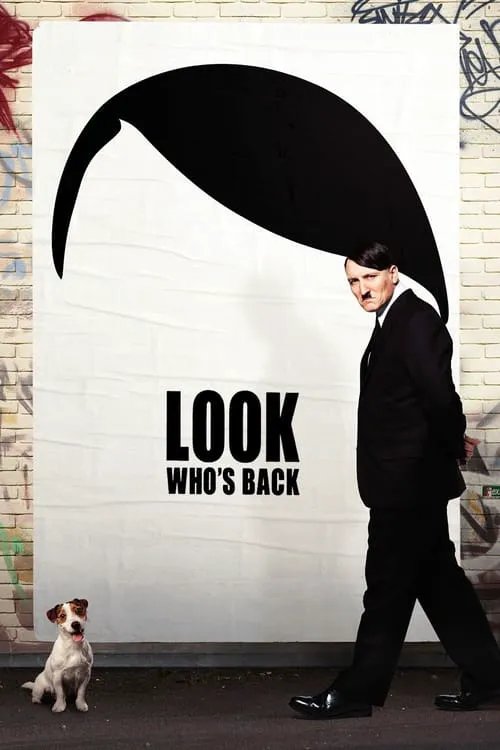Look Who's Back

Plot
In the 2015 satirical comedy-drama film "Look Who's Back" (German title: "Er ist wieder da"), director David Wnendt brings to life a darkly comedic and thought-provoking exploration of modern society's fascination with, and often willful ignorance of, its troubled past. The film is based on the 2011 novel of the same name by Timur Vermes, a bestseller in Germany, which offers a scathing critique of contemporary society's inability or unwillingness to confront its history. The story begins with Adolf Hitler, the infamous leader of the Nazi regime, who reappears at the site of his former bunker in present-day Berlin, 67 years after his death. Confused and disoriented, the elderly Hitler stumbles through the city, struggling to comprehend the changed landscape and his own place within it. After a series of comedic misunderstandings, Hitler is mistaken for a comedian – specifically a satirical comedian of the kind popularized by the likes of Borat's Sacha Baron Cohen – and is promptly whisked away to a TV studio for a live performance. In this initial scene, the film sets the tone for the rest of the narrative, combining elements of absurd comedy and biting social commentary. Hitler's hapless attempts to grasp the intricacies of modern society are mirrored by his hosts, who are more concerned with the ratings and box office potential of their "Hitler the comedian" persona than with understanding the historical significance of the man they are dealing with. However, as the film progresses, Hitler's persona begins to take on a more sinister tone, and it becomes increasingly clear that he is not just a comedic caricature, but an actual historical figure from a period of catastrophic suffering and devastation. Wnendt deftly captures the nuances of Hitler's character, conveying the complexity and depth of a man who was both a master orator and a ruthless leader. As Hitler becomes embroiled in the social media-driven world of modern celebrities, he finds himself at the center of a maelstrom of attention, with fans, detractors, and opportunists all clamoring for a piece of him. Through this narrative thread, the film explores the darker aspects of human nature, revealing a society all too willing to indulge in Hitler's charisma and ideology, even as they claim to reject the very ideas he represented. Meanwhile, Oliver Masucci's portrayal of Hitler is both a masterclass in comedic acting and a chilling reminder of the enduring presence of the past in our collective psyche. His Hitler is a figure both recognizable and alien, a man whose actions and words are both familiar and yet, in their extremity, utterly incomprehensible. Ultimately, "Look Who's Back" poses pressing questions about the nature of celebrity, the commodification of tragedy, and the societal amnesia that allows us to forget, or selectively edit, our own dark histories. Wnendt's film is a thought-provoking exploration of the ways in which we interact with, and often trivialize, the complexities of history, leaving us to wonder whether the past is truly past, or if it is, in fact, all too present. As the film hurtles toward its climax, Hitler finds himself at the center of a chaotic media storm, with both his fans and his detractors clamoring for a piece of him. In a world that has lost touch with its own past, where the lines between history, entertainment, and politics are increasingly blurred, Hitler becomes a symbol of both the banality of evil and the darker aspects of our own nature. In the end, "Look Who's Back" is a film that refuses to offer easy solutions or straightforward answers. Rather, it presents a complex, nuanced portrait of a society struggling to come to terms with its own history, even as it indulges in the spectacle of a monstrous figure from that past. Through its biting satire, thought-provoking commentary, and masterful performances, the film offers a haunting exploration of the ways in which we live with, and are haunted by, the ghosts of our own making.
Reviews
Recommendations




